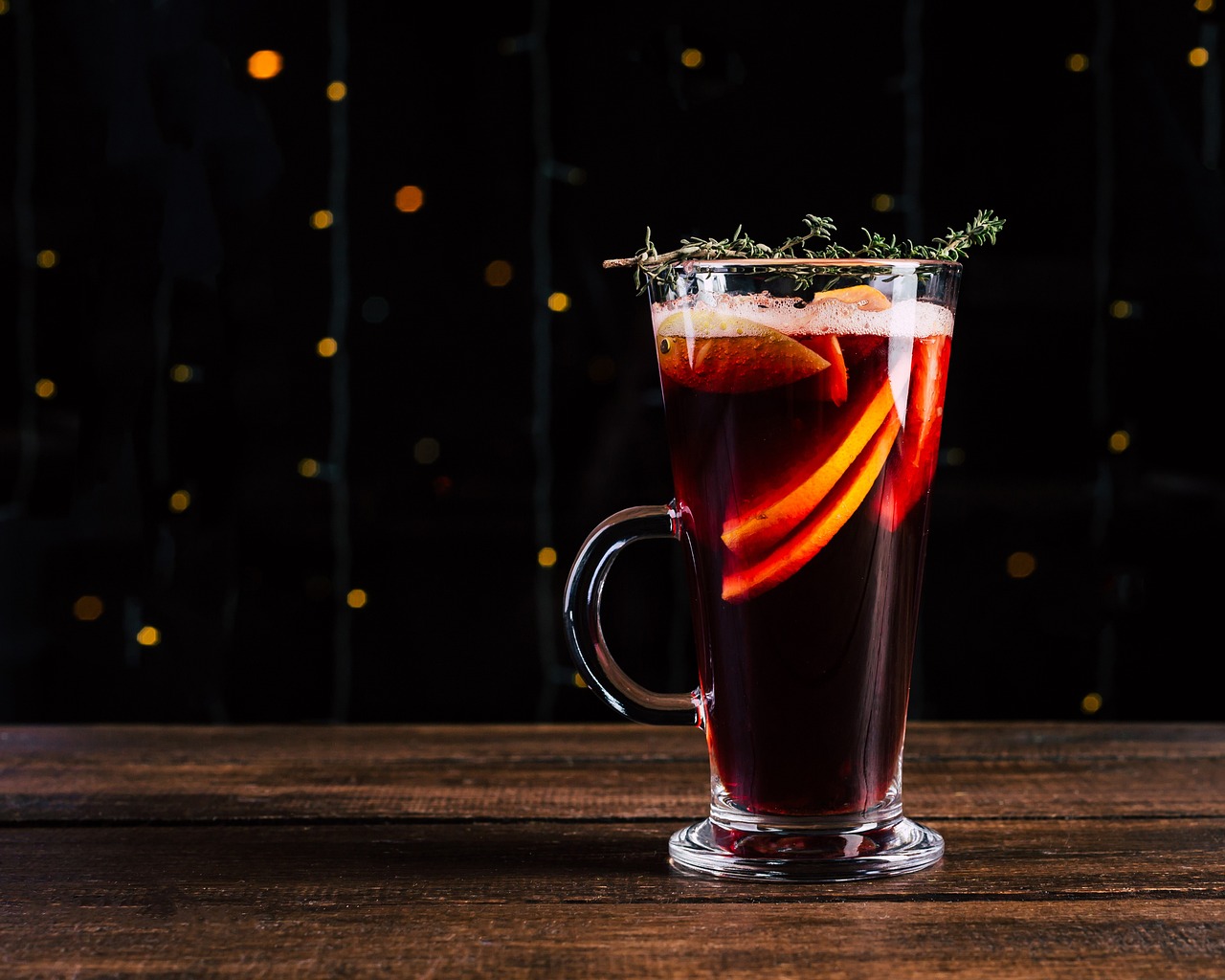
As the winter chill sets in and festive lights begin to twinkle, there’s one tradition that calls out to the warmth-seekers and flavor aficionados alike: the time-honored practice of sipping Glühwein. This mulled wine, a staple at Christmas markets and holiday gatherings, is not just a drink; it’s a cupful of history, spiced with traditions that span centuries. In this article, we will explore the rich tapestry of Glühwein’s history and provide you with a classic recipe to enjoy its timeless taste.
The Historical Blend of Glühwein
The origins of Glühwein — literally translated from German as “glow-wine,” owing to the hot irons once used for mulling — can be traced back to the Romans. As the Roman Empire expanded, so did their winemaking techniques and, along with them, the concept of heating wine. The purpose was not only to warm the body during the colder months but also to make the wine last longer and taste better, as spices were often added to mask the flavor of wine that had started to turn.
As the centuries rolled on, Glühwein began to symbolize more than just a practical solution to the winter’s cold or a means to avoid wasting wine. By the Middle Ages, it had taken on medicinal properties, with spices like cinnamon, cloves, star anise, and citrus touted for their health benefits. The practice of mulling wine with spices was believed to ward off sickness, a handy attribute, especially during the harsh European winters.
Fast forward to the 19th century, Glühwein was cemented into holiday culture by none other than the British, who popularized the term “mulled wine.” The festive beverage became a Christmas market staple, especially in German-speaking countries where it was enjoyed by the masses, celebrating the season of giving and the spirit of community.
Glühwein Through the Ages
Glühwein has not remained static through the ages. Every era has left its mark on this spiced wine, with various cultures adding their own twist to the recipe. In Scandinavian countries, a similar drink called “glögg” is enjoyed, often with a stronger hit of alcohol from the addition of vodka or aquavit. The French have their “vin chaud,” the Italians “vin brulé,” and each variation carries the unique signature of its homeland, from the choice of wine to the specific blend of spices.
What has remained constant is Glühwein’s association with festivity, community, and warmth. It is a drink that brings people together, offering comfort and joy during the coldest time of the year.
Crafting the Classic Glühwein Recipe
Now that we’ve journeyed through its rich history, let’s delve into the art of making traditional Glühwein. The process is simple, but the results are spectacular, a testament to the adage that good things don’t necessarily require complexity.
Ingredients:
- 1 bottle (750 ml) of dry red wine – Choose a robust variety like Merlot, Zinfandel, or Grenache for the best results.
- 1 orange – Use both the juice and zest.
- 6-8 cloves
- 2 cinnamon sticks
- 2-star anise
- 1/4 cup of sugar – Adjust to taste, considering the sweetness of the wine and your preference.
- Optional: A splash of brandy or rum for an extra kick.
Instructions:
- Begin by zesting the orange. You can use a zester or a vegetable peeler to obtain large strips, which will make it easier to remove them later.
- In a large pot, combine the wine with the freshly squeezed juice of the orange you’ve just zested.
- Add the cloves, cinnamon sticks, star anise, and the orange zest to the pot.
- Stir in the sugar, then heat the mixture over medium heat. It’s crucial to avoid letting the wine boil; you want it to warm up so that the spices can infuse their flavors, but boiling will cook off the alcohol and could turn the flavors bitter.
- Once the sugar is dissolved and the wine is steaming (not boiling), reduce the heat to low and let it simmer for about 15-20 minutes. This allows the spices to mingle and the flavors to deepen.
- If you desire a stronger drink, now is the time to add a splash of brandy or rum.
- Strain the Glühwein to remove the spices and orange zest.
- Serve the Glühwein warm in mugs or heat-resistant glasses. For a festive touch, garnish each cup with a cinnamon stick or an orange slice.
Tips for the Perfect Glühwein
- The quality of the wine matters. You don’t need to opt for a premium bottle, but choose one that you would enjoy drinking on its own.
- For a sweeter variant, consider adding a dash of honey or maple syrup instead of sugar.
- To make a non-alcoholic version, substitute the wine for a combination of grape juice and black tea. The tea adds a depth of flavor that mimics the complexity of wine.
- Always taste as you go. The amount of spices and sweetness is subjective, and you should adjust according to your preference.
- Glühwein can be made in advance and reheated gently before serving, making it perfect for entertaining.
The Legacy of Glühwein
The history of Glühwein is not just a tale of a beverage but a narrative of cultural fusion, tradition, and the human quest for warmth and connection. It is a testament to the idea that some traditions, much like a fine wine, only get better with age. As you hold a mug of Glühwein, you’re not just sipping on spiced wine; you’re partaking in a tradition that has warmed millions of hearts over countless winters.
So this holiday season, when you find yourself wrapped in a cozy blanket, gazing at the snowflakes gently falling outside, remember the long journey of the Glühwein in your hand. From the ancient Romans to the bustling Christmas markets of today, this mulled wine has been a steadfast companion through history, a fragrant and delicious link to our past, and a warm embrace in the present.
Related articles:
15 Best German Christmas Recipes
Feuerzangenbowle – Glühwein with a Twist!
Glühwein
Spekulatius (German Spiced Biscuits)







